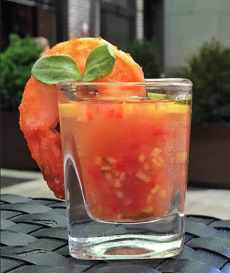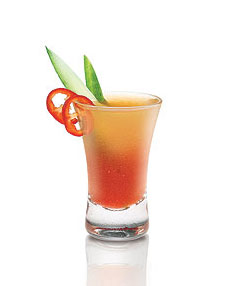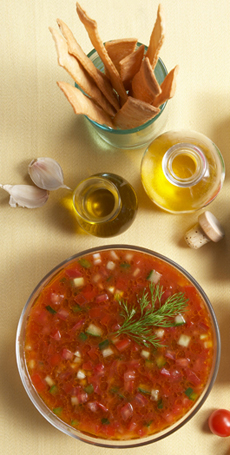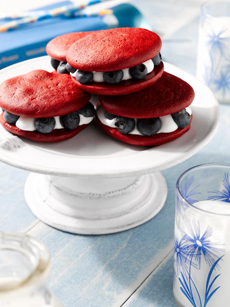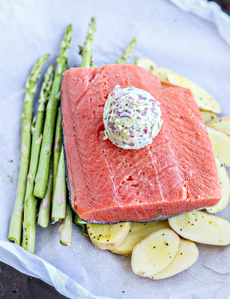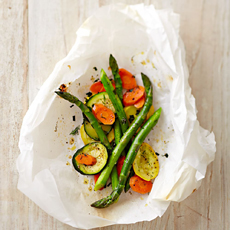|
For cookouts and picnics, our family never had everyday soft drinks. For these special occasions, the beverage menu included lemonade, iced tea and Mom’s favorite fruit punch (recipe: equal parts of grape juice, lemonade and orange juice, all from frozen concentrate).
For July 4th, we switched to a “patriotic” lemonade: red, white and blue. The ingredients: pink lemonade tinted darker with some food color, white ice cubes and blueberries inside the ice cubes.
Beyond red food color, there are different ways to tint the lemonade a deep rose:
Add some red juice: blood orange, cherry, currant, cranberry, grape, pomegranate or watermelon juice.
Hibiscus tea (buy the tea and brew it).
Celestial Seasonings Red Zinger, Raspberry Zinger or Watermelon-Lime Zinger tea, all of which are blends that contain hibiscus.
The herbal teas are delicious iced, so instead of lemonade, you can make patriotic—and caffeine-free—iced tea!
For adults, keep bottles of gin, lemon liqueur, tequila or vodka (especially lemon-flavored vodka) next to the pitcher with a shot glass and a mixing spoon, and allow the grown-ups to add what they like.
RECIPE #1: BLUEBERRY ICE CUBES
First, make the white and blue ice cubes. You may need to start making batches a couple of days in advance, depending on how many ice cube trays you have and how many guests you expect.
This recipe makes enough cubes for a quart of lemonade, assuming 3 cubes per glass.
Ingredients For 12 Ice Cubes (One Tray)
36 fresh blueberries (about 1/4 cup)
Water
Preparation
1. PLACE 3 berries in each of 12 ice cube compartments.
2. FILL with water and freeze. Remove the frozen cubes to a freezer storage bag to use the tray for another batch.
RECIPE #2: RED, WHITE & BLUEBERRY LEMONADE
While you can purchase pink lemonade in a large format, frozen concentrate is less expensive—and lighter to carry! If you want sugar-free lemonade, you can use Crystal Light (we prefer the taste of their regular lemonade to the pink lemonade; or squeeze fresh lemonade and add your sweetener of choice.
Ingredients For 1 Quart (Four 1-Cup Servings)
1 can pink lemonade concentrate (frozen)
Red color of choice (see list above)
1¼ cups fresh blueberries, divided
Blueberry ice cubes (recipe below)
Optional: gin, limoncello, orange liqueur, tequila, vodka
Optional: straws (you can find them in white with red and/or blue stripes)
Preparation
1. ADD water to the lemonade concentrate per package instructions. Then add the coloring agent to get the desired shade. Note that excepting food color, the more juice you add, the less the drink will taste like classic lemonade. But there’s nothing wrong with that! ss measuring cup or other container. Microwave on high until hot, about 1 minute.
2. STIR until the sugar dissolves. Add the lemon juice and enough water to make 1 quart. If the red color isn’t strong enough for you, add a drop of food color or some juice to create your preferred shade. Chill.
3. FILL tall glasses with the blueberry ice cubes. Add the lemonade and optional spirits.
MORE JULY 4TH LEMONADE RECIPES
Spicy Hot Lemonade Recipe
Homemade Lemonade With Red & Blue Berries
Regular Lemonade With A Blueberry & Raspberry Cocktail Pick
|
|


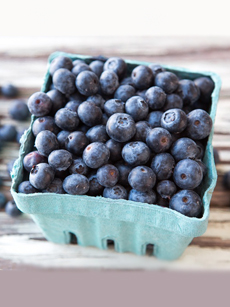

[1] Red, white and blue lemonade (photo courtesy BlueberryCouncil.org). [2] We added some hibiscus iced tea to make the frozen pink lemonade in the top photo a deeper rose color (photo of hibiscus tea courtesy Republic Of Tea). [3] A pint of blueberries for the ice cubes (photo courtesy Good Eggs). [4] Pink lemonade concentrate (photo courtesy Minute Maid).
|







